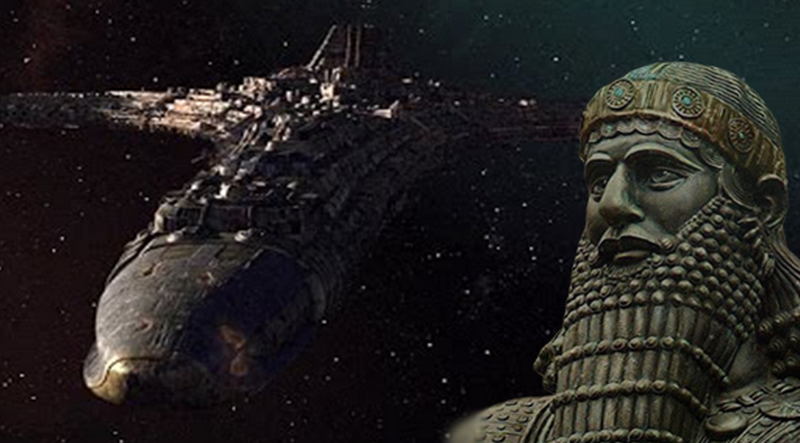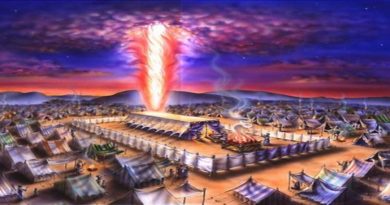Sumerian people and the Annunaki, what you don’t know
An alien technology behind the destruction of Ur?
The Sumerian people has always been considered fascinating for a thousand reasons let’s face it, origins and development as well as extinction have never been very clear, a culture that has quickly grown in many sectors, from an architectural, astronomical, legal, administrative point of view. social etc … A people that mysteriously arose, then disappear. Many scholars have considered invasions, political upheavals, famines and natural disasters, but there is strong historical evidence found in the Sumerian tablets that suggest an annihilation that begins with the city of Ur, fulfilled by the Annunaki,
The decision that the Sumerians should disappear from the face of the earth is made by the Anunnaki in meeting, in 2004 BC.
Incidentally, the powers in the state were divided as follows:
1) Anunna (god)
2) priests in close contact with the god to whom the king referred
3) re
4) officials (governors of annexed countries)
5) nobles
6) large landowners
7) The people, made up of artisan merchants, farmers and shepherds
8) Finally: slaves, nomadic prisoners of war or extremely poor peasants who in return
of an accommodation they sold themselves and their family.
The third dynasty of Ur will be the last to disappear. Ur is the most important city of Shumer and is ruled by the last Sumerian king Ibbi-Sin.
As mentioned, the texts attribute the destruction of the city of Ur to a decision of the Anunnaki assembly, which once taken cannot be changed (despite the prayers of Nanna-Sin, son of Enlil, in favor of his city) so that it can then be undertaken a new positive and reconstruction phase.
There is no reason for this drastic decision, simply the Sumerians must disappear and the power must go to the Semites, even if not all the gods agree but this matters little.
The king, Ibbi-Sin must be granted that in the early years he managed the kingdom in an energetic way, collecting victories over the territories of Simurrum and Khukhnur (Zagros) and a dynastic marriage with Zabshali.
However, the Anunnaki plan in a few deadly moves provides for the destruction of Ur, through the manipulation of the climate. The intervention is so effective as to first put the king on the cross, then isolate the city, then attack it from the outside and finally deliver the coup de grace.
The plan is purely strategic, it does not foresee the sole use of technologically advanced means but rather of men, perhaps it was important that these understood that when needed there was to arm themselves and move by order of the king who in turn took orders from the god.
As mentioned, the empire gripped by many internal problems, especially political ones, enters into crisis, because the city centers dependent on Ur, slowly one after the other, become autonomous, “disconnect”: Eshnunna first in the 2nd year of reign, then Susa in the 3rd, Lagash in the 5th, Umma in the 6th and lastly Nippur in the 7th.
Ibbi-Sin is therefore in the seventh year of his reign, where even the offerings to the deities of the capital, by the provincial governors of the countries that were formerly dependent, are suspended, and what was until a few years before a great kingdom, is it simply reduces to the city of Ur alone and to a few other small towns that still remain.
But that’s not enough, in the same period the kingdom is facing a serious crisis affecting the agricultural production of the city’s supplies, the prices on the main food products skyrocket, only the richest are able to find food, while the people are in serious difficulty.
-First attack in two moves: textual evidence
First move: The first cause of this situation is the climate.
There are texts that report the drama of the scarce floods of the Tigris and Euphrates causing a severe reduction in agricultural products.
The scarcity of food caused the price to rise, not within everyone’s reach, and therefore the people were largely reduced to starvation.
Other administrative tablets have confirmed the literary ones (so the news seems realistic).
Second move: The kingdom of Sumer is attacked from all sides by other peoples by order of Enlil.
The first to invade Sumer are the MAR.TU (the Amorites, a population of Semitic origin), who manage to cross the great wall that had been erected by the Sumerians, and which practically divided the country in half, in an attempt to keep them out from the southern part of Mesopotamia.
To the east, from the Zagros mountains (area of KUR – Nergal), the Gutei (in the text “the lamentations of Ur” it is clearly expressed that he was sent by Enlil) defined as “the dragons of the mountains” and the people of Shimashki, descended and attacked the city of the central part, Kish and Adab, destroying them.
Without stopping then they took the road to the southernmost part of Sumer until they reached the city of Eridu, finally the Elamites broke into the city of Lagash devastating it.
So we have the whole Iranian side attacking, in different groups, both from the mountains and from Elam (Iran) the area of Sumer.
-Third move: Ishbi-Erra’s betrayal
A batch of royal letters has come down to us and thanks to them we are able to reconstruct the last dramatic phase of the collapse of Ur.
lshbi-Erra is one of the central characters of the question, we are talking about an official of Ibbi-Sin originally from Mari, therefore not Sumerian but Semitic.
He had been instructed by the king to go to the area of Isin and Kazallu, to find grain to send to the city of Ur.
The ruler also had given Ishbi-Erra the task of securing 72,000 gur of wheat (ie 14,400,000 liters) in the city of Isin.
The official’s job was to load the grain onto ships and then get it to Ur.
In this letter, it seems that Ishbi-Erra has no intention of doing so:
“The Martu all of them entered the country, conquering all the great fortresses one by one.”
Consequently, he asks the sovereign to take care of the defense of Nippur and Isin himself.
His aim is to persuade the king to appoint him governor of Nippur and Isin. In a nutshell: either you appoint me governor or I won’t send you the grain.
In the following letter we read Ibbi-Sin’s reaction to Ishbi-Erra’s blackmail. He writes to Puzurnumushda, the governor of Kazallu:
When you speak to Ishbierra, this is the message from Ibbisin your king, which you must give him:
“Just as Enlil keeps me away with the troops, you allow yourself to betray me! Today Enlil hates me, hates me, hates me, Ibbisin.
He delivers Ur into the hands of his enemies.
In distant territories the enemies rebel, they promote insurrections in foreign countries.
But when Enlil looks kindly at Ibbi-Sin again, I’ll hit you in the head. Be careful!
You received twenty talents of silver to buy grain.
You paid a silver shekel for two gur, while you paid me the price of a shekel for a gur.
How can you allow Puzurnumushda, the general of Badigikhursag, to bring the Amorites into the land of Sumer?
True, there are people without heads in Sumer!
Why didn’t you oppose the Amorites?
Despite being called “brainless” Ishbi-Erra insists on being recognized as ruler of the city of Isin.
He claims to have been chosen by Enlil as the guarantor of kingship over Sumer.
Ibbi-Sin goes on a rampage: a Semitic king of Sumer? For the sovereign it is unacceptable.
Here’s what Ishbi-Erra replies:
“Enl, my lord, has entrusted me with the office of shepherd on Sumer, the banks of the Tigris, the Euphrates, the Abgal canal and the Meenlil canal, with all their cities, their gods and their armies, from the land of Khamazi to the Magan Sea, Enlil promised me that they would enter the temple of Ninninsina, to make Isin the Enlil’s granary and give it a sublime name …
Why do you oppose my will?
I have sworn by Enl, my lord and Dagan, my personal god:
my hand will certainly reach Kazallu!
The cities and the country that Enlil promised me I want to subdue. “
Ibbi-Sin’s response:
“In former times Enlil hated Sumer, and elevated to the kingship of Sumer
a monkey descended from the mountain (which would be him, Ishbi-Erra) now Enlil has given royalty to Ishbi-Erra, to a wandering skunk, to one who is not even of Sumerian blood. “
What happens then?
The king confided in Ishbi-Erra considering the gravity of the situation, the latter instead follows the directives of Enlil and founded, with or without the sovereign’s permission, a new dynasty and a new kingdom in Isin.
To recap: all the eastern part of the kingdom that was formerly of Ibbi-Sin is occupied by: Elamites;
The Gutei and Amorite raids destroy and occupy the cities;
The north with Isin (Ishbi-Erra on behalf of Enlil) breaks away.
The empire of Ur is reduced to the capital and it is the end.
Historians cannot say what could be the reasons why the sovereign did not rebel against events with more energetic military action, also because we do not know if chronologically the economic factors of the crisis come before or after the military and political ones.
The literary texts consider all aspects of the crisis including the consequence of the decision of the gods to leave the various cities, thus decreeing the collapse of Ur.
We do not know the reasons why this happened, perhaps the answer is simpler: «Ur had been granted kingship, but not an eternal kingdom! who has ever seen a kingdom whose kingship is eternal? ” perhaps the Annunaki had decided that the Sumerians had to disappear and Ibbi-Sin did not defend himself.
Ibbi-Sin continued to reign for a long time in a kingdom reduced to the bone and certainly without the power it had held for 25 years, until the coup de grace. An Elamic attack on the capital induced Ibbi-Sin to barricade himself within the walls; the siege was long and the city capitulated from hunger. The Sumerian people opened the door to the Elamites who broke into the city, plundered and destroyed everything with the support of the gods.
Ibbi-Sin was captured and taken prisoner to Susa, while an Elamic garrison remained in Ur for some time, until the changed divine attitude will allow his release by Ishbi-Erra and his reconstruction.
The fall of Ur was shocking and aroused a strong impression throughout Mesopotamia, so much so that it was also talked about in subsequent epochs, comparing the king’s name to misfortune and devastation: “omen of Ibbi-Sin, under which the Elam reduced Ur to a heap of ruins »;
«Omen of Ibbi-Sin which means destruction».
Enlil has fully succeeded in his purpose. The Semites take the place of the Sumerians who are doomed to extinction.
What is specific to us about the destruction of Ur? Not only then the Elamite invasion but the use by the Annunaki of the forces of nature. We see it in the poem that has come down to us.
The story of the fall is in the poem “The Lament for Ur” found during excavations by archaeologists at the University of Pennsylvania Museum of Archeology and Anthropology in the Nippur temple library.
From the recomposition of the fragments of the tablets came a prayer for the city of Ur which was experiencing a period of great danger. Many of these tablets or fragments attributable to the same poem are scattered around the world in prestigious institutions and museums, including the Louvre in Paris, the Ashmolean Mueseum in Oxford, the Anterior Asian Museum in Berlin in Germany, and in Switzerland.
Other tablets were discovered by two of the greatest archaeologists of all time, Leonard Wooley and Samuel Noah Kramer who contributed greatly to compiling the complete edition of the Lament for Ur.
The story focuses mainly on the testimony of the goddess Ningal who mourns her city now destroyed by the storm unleashed by the god Enlil. deaf to the pleas of the goddess to stop the catastrophe between the general stampede of inhabitants and divinities.
“I stretched out my foot, stretched out my arms to An I gave vent to my tears to Mullil, I personally presented my plea: I told them. The way people do not know is annihilated!
The story of the hurricane of water and fire unleashed by Enlil follows, the sky as black as night.
The gods abandon the temples dedicated to them by humans one by one.
“Ninlil abandoned that house, the Ki-ur, and let the breeze haunt his fold.
The queen of Kish abandoned her and let the breeze haunt her fold. Ninmah left that Kish house and let the breeze haunt her fold. “
We wonder at this point if the Annunaki were able to manipulate natural elements such as water, wind, and fire.
The famous global flood, for example, does not seem to have been so massive on a planetary level. The latest paleo-climatology studies tend to tell more of an extensive but localized disaster in Mesopotamia caused by the Annunaki.
The destruction of Ur which is not part of the historical period seems to have precise connotations and characteristics of a destruction wanted by these beings.
Is it a coincidence that Enlil was nicknamed the god of the winds?
Below is a list of destroyed temples such as Agrun-kug, Egal-mah, and Ekur himself the sanctuary of Enlil.
The description of desolation and scorched earth, was any energy weapon used that burns?
Let’s read:
In those days the storm was [finally] averted from the country; the people groan!
the surroundings were soiled by his people, not by shards [of the most ancient strata, shards that formed the covering of the relief on which the city stood],
in its walls there were breaches; the people groan!
in its high doors and on the ramps the corpses were piled up,
in all the spacious cult streets they lay head to shoulder,
in all the avenues and streets the corpses were piled up,
even the open spaces, where the village dances were held, were filled with corpses in heaps.
The blood of the country filled all the holes, like copper or tin [melted in the mold],
their bodies, like sheep fat in the sun, dissolved.
Kramer, SN, Lamentation over the Destruction of Ur (AS 12), ll. 1 ff .; 208 ff.
The lamentations are part of an epic of writings after the end of the Sumerian civilization crossed by a period of strong decline, socio-political instability and ultimately victim of the actions undertaken by the Annunaki who inflicted the coup de grace.
There are other complaints which are:
– The lament for Nippur
– The lament for Eridu
– The lament for Uruk
– The lament for Sumer and Ur
We understand well that the Annunaki get tired of human behavior and of the Sumerian civilization and how in the presence of a dying person they put an end to a people who have become an icon of civilization.
Cesare Valocchia





